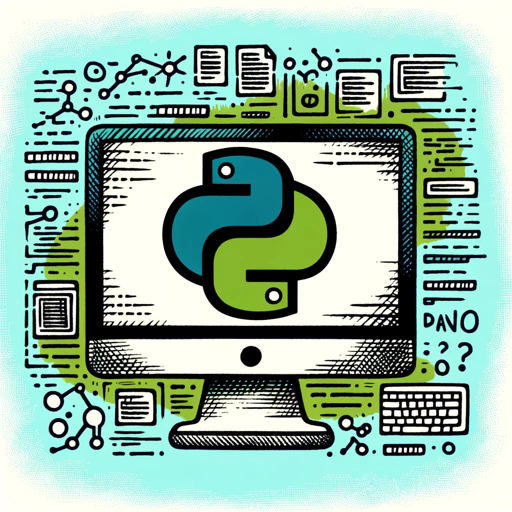Wazuh Helper-AI-driven Wazuh guidance tool.
AI-powered Wazuh assistance for cybersecurity.
Related Tools
Load More
Cyber security
Cyber security advisor for digital safety

Kubernetes assistant
Assistant for kubernetes environments managed by gitops

Ansible Guru
Senior DevOps Engineer specializing in Ansible

Docker Helper
Friendly guide for Docker and Docker Compose advice.

Django Dev Helper
Your go-to Django development assistant.

HomeAssistant Helper
Your go-to source for all HomeAssistant updates and queries
20.0 / 5 (200 votes)
Wazuh Helper: Purpose and Functionality
Wazuh Helper is a specialized AI-driven tool designed to provide in-depth assistance and guidance on using Wazuh, an open-source XDR (Extended Detection and Response) platform. The primary function of Wazuh Helper is to help users understand Wazuh's features, architecture, deployment, and integration capabilities in a detailed and accessible manner. This includes explaining how to configure Wazuh for optimal threat detection, compliance monitoring, and incident response. Additionally, Wazuh Helper supports users in troubleshooting common issues, developing custom rules and decoders, and enhancing their overall security posture through practical examples and scenarios. For example, in a scenario where an organization is setting up Wazuh to monitor a multi-cloud environment, Wazuh Helper can guide the user through the configuration of agents, manager settings, and cloud integrations to ensure comprehensive visibility and control.

Key Functions of Wazuh Helper
Architecture and Component Guidance
Example
Explaining the roles of different Wazuh components (e.g., Wazuh Manager, Wazuh Agents, and Wazuh API) and how they interact.
Scenario
A cybersecurity team wants to deploy Wazuh in a hybrid cloud environment. Wazuh Helper provides a breakdown of each component's function and helps them design an architecture that ensures high availability and scalability.
Installation and Configuration Assistance
Example
Providing step-by-step instructions for installing Wazuh on various platforms (Linux, Windows, Docker, etc.) and configuring it for specific security requirements.
Scenario
A small business is looking to deploy Wazuh to comply with PCI DSS standards. Wazuh Helper walks them through the installation and configuration process, ensuring all necessary settings for PCI DSS compliance are correctly applied.
Threat Detection and Incident Response
Example
Guiding users on setting up and optimizing Wazuh's real-time monitoring and alerting capabilities for different types of threats.
Scenario
A managed security service provider (MSSP) wants to use Wazuh to monitor their clients' networks for suspicious activity. Wazuh Helper assists in configuring custom detection rules to identify and alert on potential threats specific to their clients' environments.
Target Users of Wazuh Helper
Security Analysts and Incident Responders
These users benefit from Wazuh Helper's detailed guidance on detecting, analyzing, and responding to security threats. By providing insights on rule customization, threat intelligence integration, and alert management, Wazuh Helper enables these professionals to quickly adapt Wazuh to their organization's specific threat landscape.
IT Administrators and DevOps Teams
IT administrators and DevOps teams can use Wazuh Helper to streamline the deployment and management of Wazuh across various environments, including on-premises, cloud, and hybrid infrastructures. They gain valuable information on optimizing performance, managing agents, automating updates, and integrating Wazuh with other tools, enhancing overall operational efficiency.

How to Use Wazuh Helper
Step 1
Visit aichatonline.org for a free trial without login, no need for ChatGPT Plus.
Step 2
Familiarize yourself with the tool by exploring its interface and understanding its key features such as providing detailed guidance on Wazuh's architecture, installation, configuration, and integration.
Step 3
Utilize the tool to ask specific questions or request detailed explanations about Wazuh. This could include inquiries about threat detection capabilities, custom rule creation, or compliance standards.
Step 4
Apply the knowledge gained from Wazuh Helper in practical scenarios, such as setting up Wazuh in your environment, optimizing its performance, or integrating it with other security tools.
Step 5
Refer to the official Wazuh documentation as needed for more in-depth information and use Wazuh Helper to clarify any complex points or to get a better understanding of how to implement specific features.
Try other advanced and practical GPTs
Chem Assistant
AI-driven solutions for chemical engineering needs.

Tinux
AI-powered solutions for technical professionals

DALL· 3 Ultra
AI-powered visual prompt optimization

Negotio Master
AI-powered negotiation mastery.

Career Coach
AI-Powered Career Advancement Tool

381A
AI-Powered Content Creation Made Easy

Crypto Signals
AI-driven cryptocurrency trading insights

Optimus
AI-Powered Solutions for Every Task

Automated Blog Writer
AI-Powered Content Creation Made Easy

CV Generator
AI-Powered Tool for Crafting Perfect CVs

Kabbalah Class Planner
AI-powered Kabbalah Class Organizer.

Smart Shopping India 🛒
Find the Best Deals with AI Power!

- Performance Optimization
- Threat Detection
- Compliance Monitoring
- Tool Integration
- Custom Rules
Detailed Q&A About Wazuh Helper
What is the primary function of Wazuh Helper?
Wazuh Helper is designed to provide detailed and comprehensive guidance on Wazuh, including its architecture, installation, configuration, threat detection, and integration with other security tools. It serves as a knowledgeable assistant for both beginners and experts in cybersecurity.
How can Wazuh Helper assist in threat detection?
Wazuh Helper can explain how to configure Wazuh for effective threat detection, including how to set up rules, decoders, and alerts. It can also guide users through the process of analyzing detected threats and responding to them efficiently.
Can Wazuh Helper help with compliance requirements?
Yes, Wazuh Helper can provide detailed information on how to use Wazuh to meet various compliance standards such as GDPR, HIPAA, and PCI DSS. It can guide users in configuring Wazuh to monitor compliance and generate necessary reports.
Is Wazuh Helper suitable for integrating Wazuh with other tools?
Absolutely. Wazuh Helper offers detailed guidance on integrating Wazuh with other security tools and platforms, such as SIEM systems, cloud environments, and endpoint security solutions, to enhance overall security posture.
What kind of support does Wazuh Helper offer for custom rule creation?
Wazuh Helper can assist users in creating custom rules and decoders tailored to their specific security needs. It provides detailed instructions and best practices for developing and implementing these rules effectively within Wazuh.